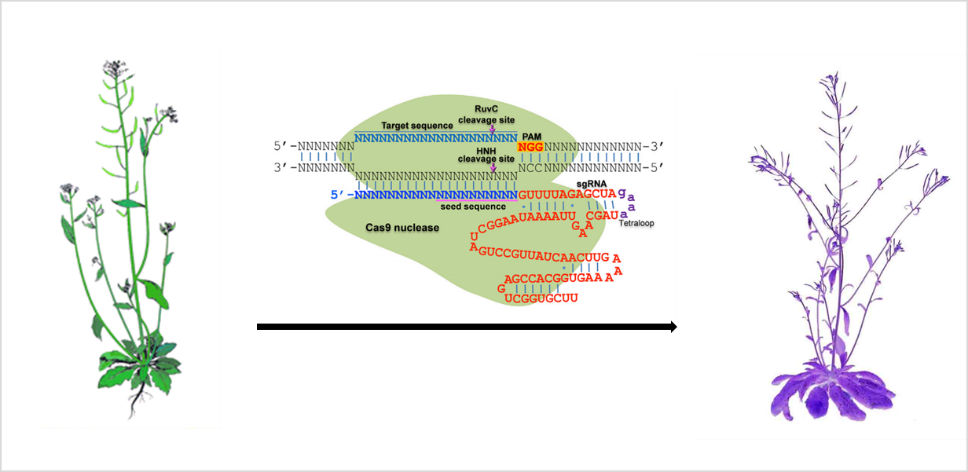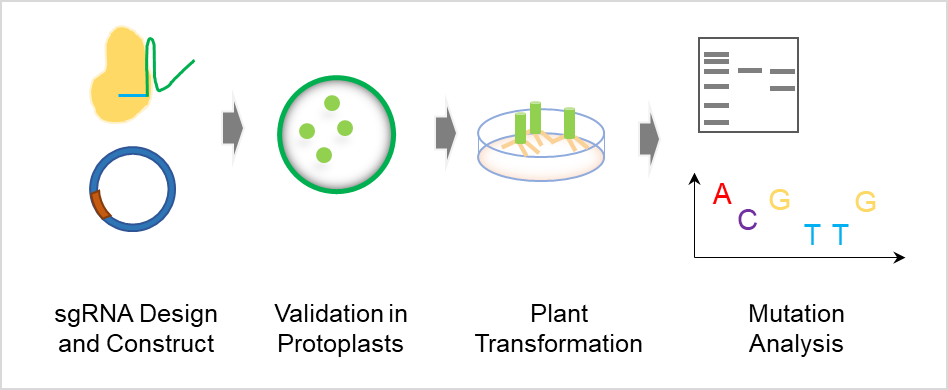
Our promise to you:
Guaranteed product quality, expert customer support.
 24x7 CUSTOMER SERVICE
24x7 CUSTOMER SERVICE
 CONTACT US TO ORDER
CONTACT US TO ORDER
Genome Editing in Plants 
CRISPR/Cas9 PlatformCB offers a one-stop plant genome editing service, including gene knockout, gene knockin and gene deletion. Various species are available for this service, including but not limited to Arabidopsis thaliana, Zea mays, rice and tobacco. With excellent platform, our experienced scientists are dedicated to providing a reliable and satisfied service for our customers.
Genetic mutants are critical for the study of gene functions in plants and for genetic improvement of crops. Plant biologists study molecular mechanisms to understand plant function, fight disease and enhance plant productivity. In the past decades, most of gene researches, which have revealed many important biological mechanisms, are based on natural mutants. Scientists try to use physical, chemical, or biological mutagenesis to identify mutants and construct mutant libraries. However, these methods only can induce mutants in a random way. It means partial of mutants, even half of mutants are undesirable and make no sense. CRISPR/Cas9, as an up-to-date technology, brings a revolution for plant research as well. Various CRISPR/Cas9 vector systems were developed for efficient editing of plant genomes, including gene knockout, genomic deletion, disruption of cis-regulatory elements, gene knockin, and suppression of virus infection. The promoters for sgRNAs expression in plants generally are U3 or U6 small nuclear RNA gene promoters. Moreover, Cas9 genes has been optimized with plant-usage bias codons to improve the expression. To date, CRISPR/Cas9 have been successfully used for plant genome editing in many species, such as rice, Arabidopsis and corn.

Work flow:
1. SgRNA design and construction
Generally, sgRNA are driven by U3 or U6 small nuclear RNA gene promoters. To insert a few sgRNA cassettes in a single binary vector is recommended when multiple genome targets are required in plant.
2. Delivery of Cas9 and sgRNA into plant cells
The Agrobacterium-mediated transformation is the most common way to introduce the Cas9/sgRNA expression cassettes into plant cells. The other methods are available if request.
3. Analysis of targeted mutations
- Endonucleases (e.g. T7E1 enzyme)
- Sanger Sequencing
4. Delivery

Advantages:
- Fast Turnaround Time
- Affordable Price
- High Efficiency
- Scarless Genome Editing
If you cannot find what you want, please feel free to contact us.
Reference:
- Ma, X.L., et al. (2016) CRISPR/Cas9 Platforms for Genome Editing in Plants: Developments and Applications. Molecular Plant9, 961-974